7 Request to Fulfill (R2F) Value Stream
This chapter provides an overview of the Request to Fulfill (R2F) Value Stream – one of four IT Value Streams that comprise the IT Value Chain. It describes the business context, objectives, and details behind the R2F Value Stream.
7.1 Objectives
The R2F Value Stream represents a modern, consumption-driven engagement model and goes beyond the traditional IT service request management. It is a framework for connecting the various consumers (business users, IT practitioners, or end customers) with goods and services that they need to drive productivity and innovation. It fosters service consumption and fulfillment, service costing knowledge sharing, self-service support, and collaboration between communities of interest to improve the overall engagement experience with IT.
Many organizations use multiple IT requests and/or Service Catalogs to address the needs of their consumers. The R2F Value Stream brings these different catalogs and consumer personas into a single consumption experience thereby eliminating the complexity and confusion consumers experience today. The goal of the R2F Value Stream is to provide a blueprint for creating a streamlined consumption experience that consistently engages consumers and eliminates the need for them to avoid working with their IT organization.
The key to success with R2F is dependent upon two primary factors:
- The ability to package deliverables as offers that consumers recognize and value, abstracting away confusing technology choices and complex fulfillment processes. This is accomplished by leveraging the Service Model to create Service Catalog Entries that can be instantiated and consumable offers that can be requested/ordered.
- The ability to present and manage an inviting consumption experience that exposes a variety of opportunities to acquire services, goods, knowledge, and/or support. This requires organizations to go beyond the traditional IT request catalog solutions.
The common limitations for current R2F practices include:
- A service consumption experience that exposes technology resources and/or IT capabilities rather than valued services.
- Multiple catalogs required for consumers to navigate in order to find and request available services.
- Too many customer service requests requiring creation of fulfillment incidents, projects, and/or human intervention resulting in delays and an unfavorable experience overall.
- Lack of service Subscription, Usage, and chargeback traceability.
7.2 Business Value Proposition
The R2F Value Stream places emphasis on time-to-value, repeatability, and consistency for consumers looking to request and obtain services from IT. It optimizes both service consumption and fulfillment experiences by delineating between the creation of offers and catalog aggregation and Service Catalog Entry composition.
Today IT organizations struggle to increase the ratio of self-sourced services over workflow-based fulfillment requiring direct human intervention. Many fulfillments today require too much intervention that consumes valuable IT resources. By increasing self-sourcing, companies will see improved business velocity and reduction in friction. They will also be able to reduce “shadow-sourcing” within the lines of business because of a more responsive consumption experience. Today’s IT is focused on delivery of technical capabilities – tomorrow’s IT must be positioned to focus on facilitating consumption of multi-sourced services.
The R2F Value Stream emphasizes the importance of deploying standard changes (a form of request management) rather than normal changes for internal fulfillments. Normal, risk-assessed and individually approved changes are one of the most time-consuming and resource-intensive activities in an enterprise-wide IT organization. Service fulfillments should be based on standard Service Models where request criteria and approvals are designed into the model and fully automated fulfillment processes orchestrate all necessary provisioning and Change Management.
The R2F Value Stream plays an important role in helping IT organizations advance toward a service broker model. Such a model is dependent on the organization’s ability to leverage both internal and external sourcing options for satisfying consumer demand. Enterprise IT organizations have been using external suppliers for goods and services for many years. However, the multi-sourcing environment will become more complex as companies expand their use of cloud-based offerings. The R2F Value Stream enables the aggregation of catalogs and catalog entries from multiple providers into a single consumption experience. Therefore, while there is complexity on the delivery side in managing the various catalogs and catalog entries, it is not exposed to the consumer and the ordering experience is seamless and inviting. The R2F Value Stream also enables effective chargeback and service costing mechanisms, a key requirement in a multi-sourcing environment.
The key value propositions for adopting the R2F Value Stream are:
- Provides a blueprint for increasing business innovation velocity by facilitating a service consumption experience that allows consumers to easily find and subscribe to goods and services through a self-service engagement model.
- Provides a functional framework that delineates between a single Offer Catalog and multiple Catalog Compositions to reduce complexity in the IT shopping experience.
- Provides an architectural foundation for moving from traditional IT request management to service brokerage that increases both business and IT effectiveness.
- Increased fulfillment efficiency and consistency through standard change deployment and automation.
- Provides holistic visibility and traceability across service Subscription, Usage, and chargeback to improve IT Financial Management.
- Enables increased cost optimization; for example, by canceling expired Subscriptions and reclaiming resources, Subscriptions, and/or licenses that are unused.
7.3 Key Performance Indicators
The R2F Value Stream critical success factors and Key Performance Indicators (KPIs) are as follows:
|
Critical Success Factors |
Key Performance Indicators (KPIs) |
|
Ability to Meet Customer Expectations |
New or modified Subscriptions per time period % and number of Subscription requests complying or breaching SLA or OLA agreements Number of Subscription requests accepted and rejected by the requestor for the first time right delivery/fulfillment Variation in the average time to fulfill Subscription requests for the predictability of delivery Number of Incidents related to request fulfillment Arrival and departure rate of service requests |
|
Reduce Costs |
Costs (burned resources) per service and per fulfillment step Breakdown of self-source fulfillments versus one-off fulfillments % and number of fulfillments requiring human intervention to be completed Number of service request queues being managed |
|
External Service Provider Compliance |
Number of purchase orders per time period % and number of orders delivered and accepted complying with underpinning contract agreements % and number of delivered orders breaching underpinning contract agreements Number of Incidents related to the purchase order fulfillment Number of purchase orders unfulfilled at the end of a given period Number of orders delivered and accepted by the requestor per time period Number of purchase orders rejected via no delivery or cancelled purchase orders |
|
Increase Speed/Agility/Flexibility (Operational Performance) |
Completed service requests Service request work-in-progress Number of interactions with consumers per service during delivery % of work-in-progress within SLA % of completed work within SLA |
7.4 Value Stream Definition
The Request to Fulfill (R2F) Value Stream contains primary and secondary functional components. Primary functional components are core to the value stream and are essential for managing the service at this stage of its lifecycle. Secondary functional components are not dedicated to R2F but provide relevant data objects to primary functional components. R2F includes the following primary functional components that provide the technology necessary to support IT portfolio activities:
- Offer Consumption
- Offer Management
- Catalog Composition
- Request Rationalization
- Fulfillment Execution
- Usage
- Chargeback/Showback
- Knowledge & Collaboration
A functional component utilizes an input data object to conduct key activities and may also provide output data objects to another functional component that requires that data.
The R2F Value Stream primarily focuses on system of record integrations between two functional components like other value streams. However, the R2F Value Stream also includes system of engagement integrations enabling a common user experience or graphical user interface mash-up. The R2F Value Stream functional components with system of engagement integrations are the Engagement Experience Portal and Offer Consumption functional components. The Offer Consumption functional component integrations include system of engagement integrations with the following functional components: Offer Management, Request Rationalization, and Chargeback/Showback.
The Engagement Experience Portal functional component is a secondary functional component since its scope can expand beyond the IT4IT Reference Architecture and into the business domain. It exposes and facilitates a unified engagement between consumers and the IT functions. The main objectives of the Engagement Experience Portal are to:
- Drive the consumption through the Offer Catalog
- Enable collaboration between communities of interest
- Obtain support through a self-service interface
- Access knowledge that enables them to be better informed about services offered by IT
There may be other engagement experiences presented through the portal but this is the core set called out explicitly in the R2F Value Stream.
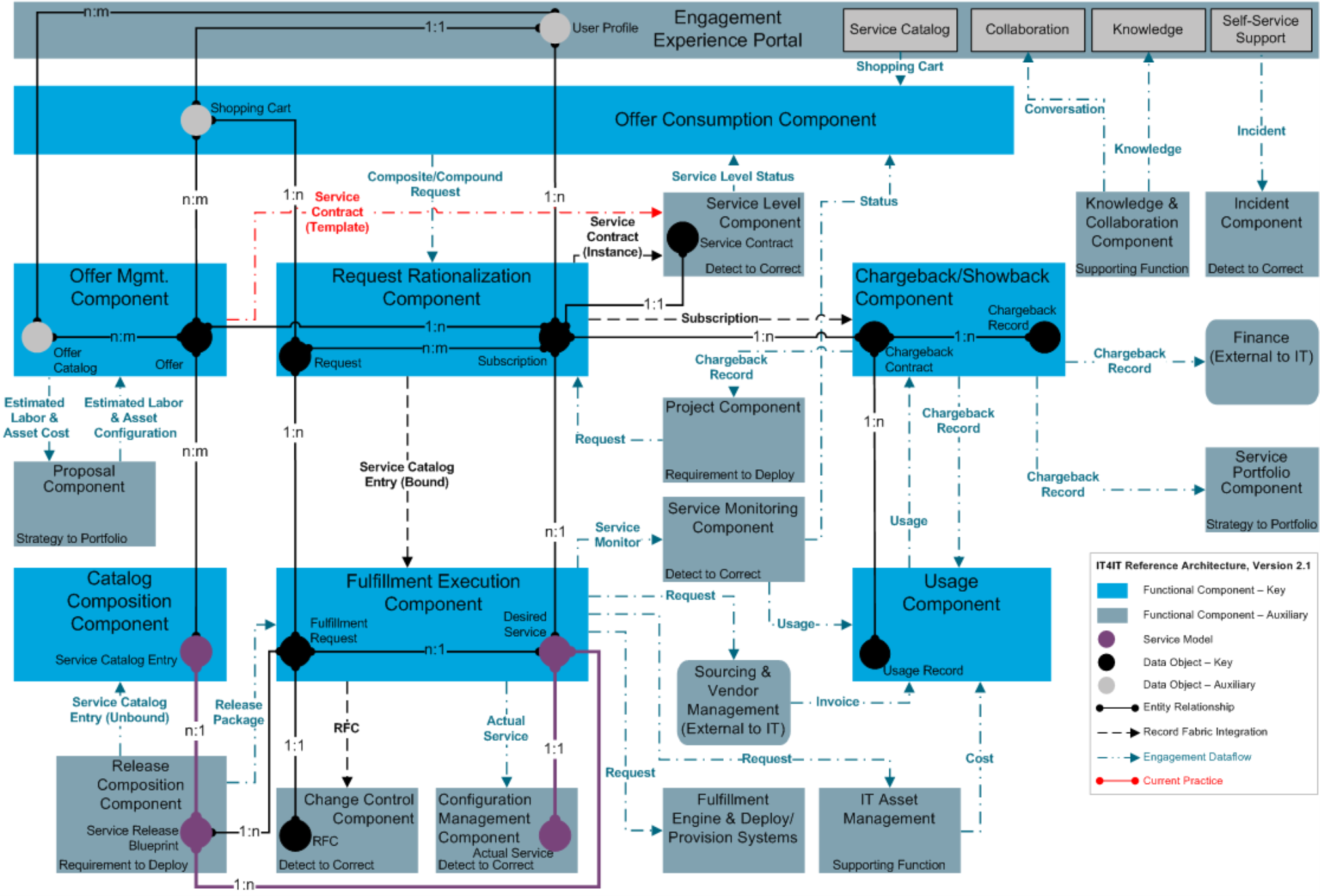
Figure 56: Request to Fulfill Level 2 Value Stream Diagram
7.4.1 Engagement Experience Portal (Secondary Functional Component)
The Engagement Experience Portal functional component is based on system of engagement integration design patterns where consumers access different functional components through a common user experience. Consumers manage certain aspects of their profile; for example, localization, preferred method of communication, user interface settings, and so on.
Purpose
Facilitate service consumption by connecting any potential consumer with the right information, goods, services, or capability at the right time through a single experience, taking into account the consumer profile. Provide an intuitive experience that draws consumers in instead of being viewed as an inhibitor to productivity that is forced upon them. Provide a self-configurable experience (such as mash-ups) so that the different types of consumers can tune the experience to best suit their needs. Provide an interface supported across multiple devices such as smartphones, tablets, etc. Provide plug-and-play connectivity for components that need to be exposed through the portal. Components for connectivity include but are not limited to catalog-driven service consumption.
Key Data Objects
- User Profile (data object): Personal data associated with a specific user and the explicit digital representation of a person's identity. A User Profile consists of different attributes managed by a user or consumed by other authoritative sources. User Profile attributes must be secure, protected, and access restricted based on roles (e.g., HR Manager) or system.
Key Attributes
The User Profile data object shall have the following key data attributes:
- Id: Unique Identifier of the user.
- Name: Full name of the user.
- Role: Used to grant access to functionality and information.
Key Data Object Relationships
The User Profile data object shall maintain the following relationships:
- User Profile to Offer Catalog (n:m): Present a personalized list of offers from the catalog depending on the consumer profile.
- User Profile to Shopping Cart (1:1): The catalog items which are ordered need to link to the consumer that will receive the items. If an approval step is required, the User Profile helps to identify the authorized person by looking up information from the organizational hierarchy.
- User Profile to Subscription (1:n): A Subscription is created and linked to the user for every service that has been ordered and fulfilled where a Subscription is required.
Functional Criteria
The Engagement Experience Portal functional component:
- Shall be available to all users that desire to consume IT services.
- Shall expose various IT functions and capabilities in a single place, unifying the experience. These functions and capabilities may be exposed in a form similar to smartphone apps.
- May allow consumers to manage their User Profile (to varying degrees as some attributes may be provider-controlled).
Model

Figure 57: Engagement Experience Portal Level 2 Model
7.4.1.1 Service Catalog Functional Sub-Component
The Service Catalog functional sub-component enables consumers to engage with and consume services through the Offer Consumption functional component. This includes but is not limited to ordering new services, modifying Subscriptions, viewing the status of existing services or requests, and costs associated with services. For a detailed description of the functionality of the Service Catalog, refer to Section 7.4.2.
7.4.1.2 Collaboration Functional Sub-Component
The Collaboration functional sub-component provides the user front end for an enterprise collaboration experience, such as a chat capability.
7.4.1.3 Knowledge Functional Sub-Component
The Knowledge functional sub-component provides the interface for users to search and read Knowledge data objects of all types and sources. Knowledge data objects may include but are not limited to IT or supplier-created technical briefs, training videos, and user-created content.
7.4.1.4 Self-Service Support Functional Sub-Component
The Self-Service Support functional sub-component:
- Provides service consumers with a way to address more of their IT-related issues, as well as receive information regarding their existing records without necessarily engaging IT providers
- Reduces the load on the IT support organization by enabling and promoting self-help and self-healing behavior through the use of communities, knowledge sharing, content, etc.
The Self-Service Support functional sub-component:
- Shall enable users to create new support tickets for issues and/or questions that they were not able to resolve, or their questions that remain unanswered.
- Shall enable users to view and update their existing support tickets.
- Can route users to access the Knowledge data objects before a new support ticket is created.
- Can incorporate the Collaboration functional sub-component to enable communication with peers and IT staff in order to gain knowledge or resolve their IT-related issues.
7.4.2 Offer Consumption Functional Component
Purpose
Present service offers to various service consumers. Facilitate consumption/management of and payment for IT services rendered. Utilize the User Profile to present a personalized experience which includes consumer-specific information such as personal preferences, location, or job function. Present consumable offers derived from Service Catalog Entries with associated descriptions, pictures, prices, and purchasing options to prospective consumers. Enable consumers to manage their Subscriptions by:
- Viewing Subscription/service status, costs, usage, etc.
- Adding new Subscriptions, ordering new services, or service instances
- Modifying Subscription parameters (also known as upgrading/downgrading)
- Cancelling/ending service Subscriptions
Key Data Objects
- Shopping Cart (data object): Contains the IT services that the user wants to order; the object only exists during the actual shopping session. Upon submission, a request is generated that is comprised of the content contained in the Shopping Cart.
Note: Shopping Cart is an auxiliary data object (not key) but is being described here to help with the reader’s understanding of the R2F Value Stream.
Key Attributes
The Shopping Cart data object shall have the following key data attributes:
- Id: Unique identifier for the Shopping Cart.
- UserId: Unique identifier for the user (from User Profile).
- ApproverId: Based on the user, the identifier of the approver (e.g., user ID of the manager).
- Status: Controls the status of the approval steps/workflow if needed.
Multiple services can be ordered for every item ordered in one Shopping Cart, therefore these attributes apply per item in the Shopping Cart:
- LineItem: Multiple items can be ordered in one go.
- OfferId: Identifier of the Offer (from Offer Management).
- RequestId: Based on the Offer the user might need to provide values/options for a successful fulfillment (from Request Rationalization).
Key Data Object Relationships
The Shopping Cart data object shall maintain the following relationships:
- Shopping Cart to User Profile (1:1): The contents of the Shopping Cart relate to a specific user, who is actually ordering the services.
- Shopping Cart to Offer (n:m): The Shopping Cart only contains those items available to the end-user from the existing Offers.
- Shopping Cart to Request (1:n): Represents the relationship between the Shopping Cart and the Requests necessary to fulfill the services ordered in the shopping experience.
Functional Criteria
The Offer Consumption functional component:
- Can provide information on the existing Subscription to enable the user to change/cancel existing Subscriptions.
- Shall provide all necessary information to guarantee the fulfillment.
- Can provide functionality to order multiple offers in one transaction.
- Can enable consumers to order services on behalf of other consumers.
- Can provide visibility to information about the user’s specific service consumption including pricing, usage, etc.
- Shall expose information on the Service Level status for the services the user subscribed to if the Service Level functional component exists.
Model

Figure 58: Offer Consumption Functional Component Level 2 Model
7.4.3 Offer Management Functional Component
Purpose
Aggregate (mash-up) all Catalog Composition items and external supplier catalogs into consumable Offers that users can order through the Offer Consumption functional component. Build and publish the various offerings into Offer Catalogs for various populations to consume, determine prices, and valid options that consumers can select. Enable Offers to be grouped into an Offer Catalog to expose them as a collection of consumable items for a given group of consumers. Fulfill each Offer through numerous underlying Catalog Compositions as determined by this functional component.
Key Data Objects
- Offer (data object): Defines how a Service Catalog Entry will be instantiated and under what terms and conditions – price, deployment, approval, workflow, service level (contract), etc.
Auxiliary Data Objects
- Offer Catalog (data object): A set or collection of Offers that are grouped together as something that can be consumed by certain consumers or consumer groups.
Key Attributes
The Offer data object shall have the following key data attributes:
- Id: Unique identifier for every Offer in the catalog.
- CatalogId: Identify in which catalog this Offer is available (from Offer Catalog).
- Name: Description of the Offer for consumers to identify/search Offers.
- StartDate: Date/time on which the Offer may be consumed.
- ExpiryDate: Date/time on which the Offer is no longer available.
- Status: Indicates if the Offer is ready for consumption (e.g., draft, published, retired, etc.).
- Price: If applicable, the pricing information on the service, including the type of Subscription.
- ReqValue: Mandatory options or variables linked to the service which need to be provided by the consumer to prevent issues during the fulfillment. (Some of) these options or variables might not be selectable for customers, but are pre-filled by the Offer itself upon creation of the Offer.
- ServiceId: Identifier for the service (from Service Catalog Entry).
The Offer Catalog data object shall have the following key data attributes:
- Id: Unique identifier for the Offer Catalog.
- Name: Offer Catalog name used for consumers.
- Roles: Authorization role required for access (from User Profile).
Key Data Object Relationships
The Offer data object shall maintain the following relationships:
- Offer to Service Catalog Entry (n:m): Ensures all required information is captured for the fulfillment (deployment/delivery) of the service.
- Offer to Shopping Cart (n:m): Each Offer may appear in multiple Shopping Carts and each Shopping Cart may include multiple Offers.
The Offer Catalog data object shall maintain the following relationships:
- Offer Catalog to Offer (n:m): Represents the collection of Offers that comprise each Offer Catalog.
- Offer Catalog to User Profile (n:m): Represents which users can access/consume each Offer Catalog.
Functional Criteria
The Offer Management functional component:
- Shall contain all of the Offers available to consumers and provide this information to the Offer Consumption functional component.
- Can group services from multiple providers (internal and external) into a single Offer (also known as a bundle of services).
- May create the Service Contract template and provide information to the Service Level functional component.
- Shall aggregate (mash-up) all Catalog Composition items and external supplier catalogs into consumable Offers that users can order through the Offer Consumption functional component.
- Shall build and publish the various offerings into Offer Catalogs for various populations to consume and determine prices, and valid options that consumers can select.
- Shall enable Offers to be grouped into an Offer Catalog to expose them as a collection of consumable items for a given group of consumers.
- Shall fulfill each Offer through numerous underlying Catalog Compositions as determined by the Offer Management functional component.
- May send the labor and asset cost estimates to the Proposal functional component if a Proposal functional component exists.
- May receive estimation about labor and asset configuration from the Proposal functional component if a Proposal functional component exists.
Model
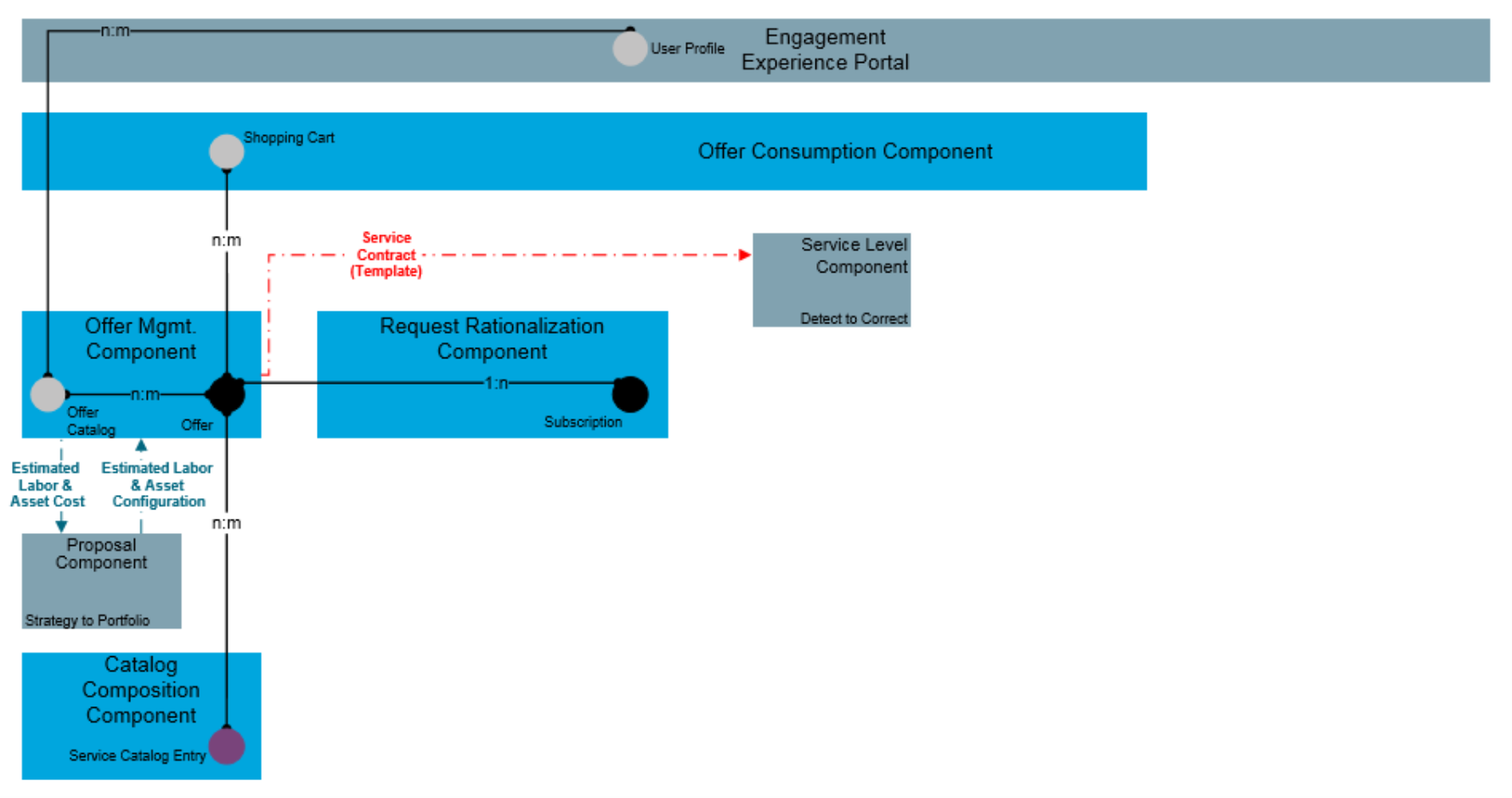
Figure 59: Offer Management Functional Component Level 2 Model
7.4.4 Catalog Composition Functional Component
Purpose
Create and publish the Service Catalog Entries, including all of their dependencies, at the level at which these can be presented as Offers in the Offer Management functional component. Service Catalog Entries are created from the Service Release Blueprint in the Release Composition functional component (R2D Value Stream). Services, as well as their dependencies and details, are accurately defined, including supplying the necessary information for the service to be instantiated. Service Catalog Entries are created and updated to prepare them for consumption, including configurable options (e.g., pricing, subscription terms, bundles, service level, support conditions, etc.).
Key Data Objects
- Service Catalog Entry (data object): Authoritative source for the consolidated set of technical capabilities and specific options available from a service system which can be delivered by the service provider. Serves as the bridge between the service system and the service offer.
Key Attributes
The Service Catalog Entry data object shall have the following key data attributes:
- Id: Unique identifier for every service in the catalog.
- Name: Name of the service used for catalog and offer creators.
- ReqValue: Provide a set of values/variables that are needed upon fulfillment.
Key Data Object Relationships
The Service Catalog Entry data object shall maintain the following relationships:
- Service Catalog Entry to Service Release Blueprint (n:1): Ensure all catalog entries relate to the specific service definitions used for fulfillment.
- Service Catalog Entry to Offer (n:m): Ensure all information needed is captured during the order phase.
Functional Criteria
The Catalog Composition functional component:
- Shall manage inter-dependencies within the services.
- Shall create and publish the Service Catalog Entries, including all of their dependencies, at the level at which these can be presented as Offers in the Offer Management functional component.
- Shall create Service Catalog Entries from the Service Release Blueprint in the Release Composition functional component (R2D Value Stream).
- Shall accurately define services, as well as their dependencies and details, including the necessary information for the service to be instantiated.
- Shall create and update Service Catalog Entries to prepare them for consumption, including configurable options (e.g., pricing, subscription terms, bundles, service level, support conditions, etc.).
Model
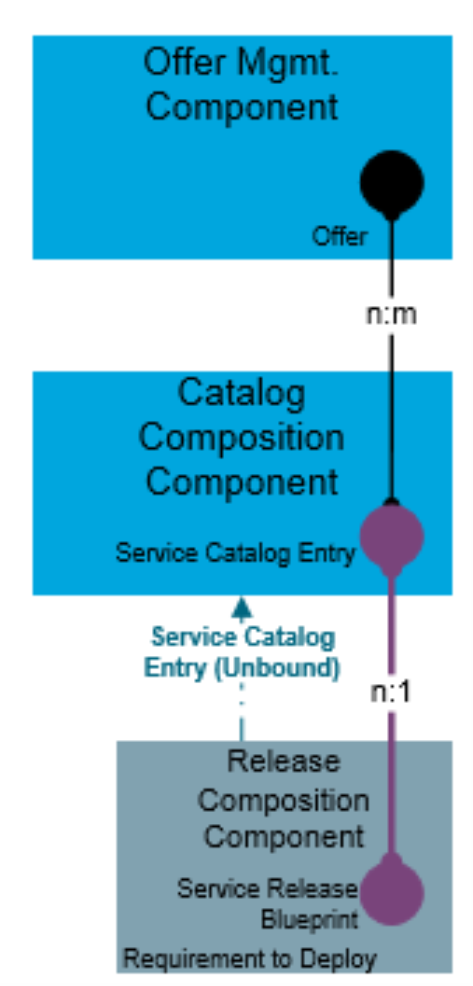
Figure 60: Catalog Composition Functional Component Level 2 Model
7.4.5 Request Rationalization Functional Component
Purpose
Rationalize, break down, and route “clean order” requests (ready for fulfillment) to appropriate Fulfillment Execution engines or providers in order to deliver services to consumers. May involve breaking down a single order/request into multiple Fulfillment Requests. Ensure appropriate fulfillment-related Subscription information is kept up-to-date, such as approval/rejections, modifications, cancellations, and so on. Enable the recording of patterns of service consumption that can be used to shape demand for new and/or improved services. Break the request down into the IT services and provide these to the Fulfillment Execution functional component and create the Subscriptions for these services upon their successful fulfillment. Fulfillment status is tracked and completion notifications from fulfillment channel(s) are received. Consumers will be able to receive status updates at the Subscription level, not at the level of the underlying requests needed to fulfill the Subscription.
Key Data Objects
- Request (data object): Contains all Offers from the Shopping Cart which have been consumed and need to be fulfilled.
- Subscription (data object): Managed by the Request Rationalization functional component. This data object represents the rights to access a service that has been provided to a consumer.
Key Attributes
The Request data object shall have the following key data attributes:
- Id: Unique identifier for the Request.
- UserId: User identifier (from Shopping Cart).
- Status: Controls the status of the fulfillment.
- Date: Date/time the Request was received.
- LatestFulfillDate: Maximum date/time on which the Request needs to be fulfilled.
- ActFulfillDate: Date/time on which the Request is fulfilled.
- SubscriptionId: Link to the Subscription for this service (from Subscription).
- ServiceId: Based on the Offer, the service(s) are identified (from Offer).
- ReqValue: Based on the Offer, the user might need to provide values/options for a successful fulfillment (from Offer).
The Subscription data object shall have the following key data attributes:
- Id: Unique identifier for the Subscription.
- OfferId: Identifier of the service (from Offer).
- UserId: Unique identifier of the user (from Engagement Experience Portal).
- DesiredServiceId: Unique identifier of the related Desired Service.
Key Data Object Relationships
The Request data object shall maintain the following relationships:
- Request to Shopping Cart (n:1): Enables the traceability of Requests to the originating order (in the form of the Shopping Cart) which is used to report the current status of the order.
- Request to Subscription (n:m): Enables traceability between the Request and the resulting Subscription. This helps to better understand how the current Subscription state was realized.
- Request to Fulfillment Request (1:n): Used for tracking fulfillment as well as to navigate between dependent Fulfillment Requests.
The Subscription data object shall maintain the following relationships:
- Subscription to User Profile (n:1): Enables the consumers to manage (view/modify) all of their Subscriptions. Also helps provide important information related to the specific consumer Subscription.
- Subscription to Offer (n:1): Provides traceability between the Subscription and the Service Contract (via the Offer).
- Subscription to Chargeback Contract (1:n): Facilitates the various chargeback/showback calculations that are dependent on Subscription details such as its contract duration and service status.
- Subscription to Desired Service (n:1): Enables traceability between the consumer, their Subscription, and the realized service. There can be multiple Subscriptions linked to a single Desired Service.
Functional Criteria
The Request Rationalization functional component:
- Shall provide information to the consumer on the fulfillment status.
- Shall provide Subscription information for the creation of the associated Chargeback Contract.
- Shall provide information on Request delivery times for SLA measurements.
- Shall break down the composite request (described by the Shopping Cart and consumer-selected values) into the individual Requests that need to be fulfilled.
- Shall send the bound Service Catalog Entry to the Fulfillment Execution functional component in order for it to create the Fulfillment Requests needed to satisfy the order.
- Should provide Subscription information to the Project functional component for associated Fulfillment Requests.
- Shall rationalize, break down, and route “clean order” requests (ready for fulfillment) to appropriate Fulfillment Execution engines or providers in order to deliver services to consumers.
- May break down a single order/request into multiple Fulfillment Requests.
- Shall ensure appropriate fulfillment-related Subscription information is kept up-to-date, such as approval/rejections, modifications, cancellations, and so on.
- Shall enable the recording of patterns of service consumption that can be used to shape demand for new and/or improved services.
- Shall break the request down into the IT services and provide these to the Fulfillment Execution functional component and create the Subscriptions for these services upon their successful fulfillment.
- Shall track fulfillment status and completion notifications from fulfillment channel(s) as received.
- Shall update consumers on order status at the Subscription level, not at the level of the underlying Requests needed to fulfill the Subscription.
- Should send the instances of the Service Contracts to the Service Level functional component if a Service Level functional component exists.
Model
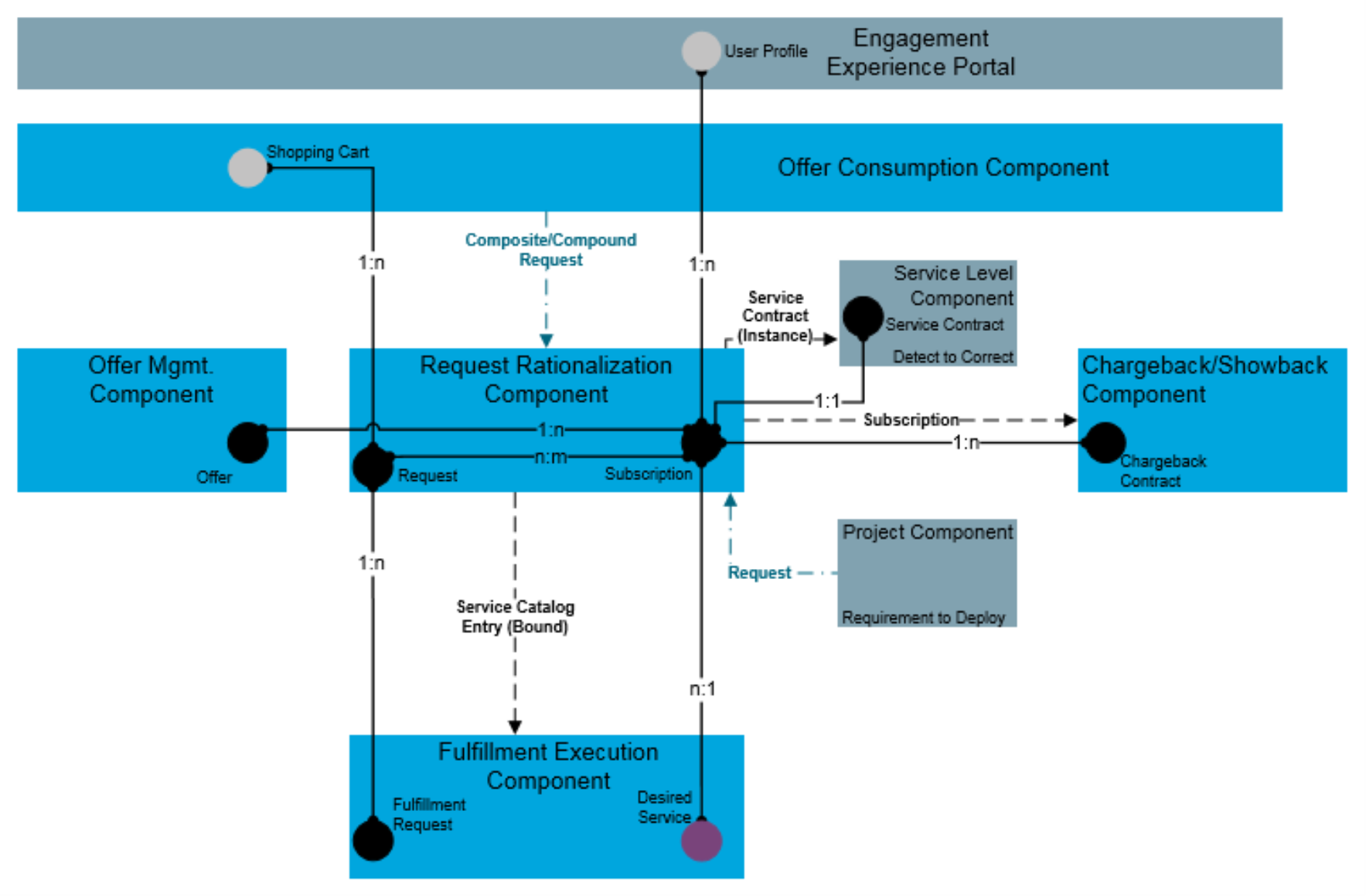
Figure 61: Request Rationalization Functional Component Level 2 Model
7.4.6 Fulfillment Execution Functional Component
Purpose
Orchestrate the delivery of the various requests amongst (one or more) fulfillment engines in order to deliver the IT service. Fulfillers may be systems that perform actions directly, or engage other systems in order to perform actions. They may also include external providers. In order to be able to engage the fulfillers, the Fulfillment Execution functional component needs to:
- Manage a registry of the available fulfillers. This registry captures:
— What each fulfiller does (capabilities)
— How to engage each fulfiller (where they are located and how to invoke them)
- Take the bound Service Catalog Entry and generate both the relevant Fulfillment Requests in order to realize/fulfill the originating consumer request and the Desired Service data object which represents the Service Model in its pre-configured or consumer configured state.
- Update the IT asset inventory as they are ordered.
- Request standard changes and update the Configuration Management functional component (if needed) on delivery of components.
- Maintain visibility into supplier capacity levels and raise alerts if capacity appears to be insufficient for immediate demand.
The Fulfillment Execution functional component can be used via two paradigms:
- Consumer-driven – In this paradigm a consumer request results in a bound Service Catalog Entry which is broken down into the necessary Fulfillment Requests needed to fulfill the originating request.
- Direct access (without a Service Catalog Entry) – In cases in which there aren’t sufficient catalog entries to describe the fulfillment and no entries are planned to be created, the Fulfillment Execution functional component is directly engaged by the Release Composition functional component (R2D Value Stream). The Release Composition functional component needs to provide enough information in order for the Fulfillment Execution functional component to create the Fulfillment Request(s) necessary to perform the actions needed.
Key Data Objects
- Fulfillment Request (data object): Describes all fulfillment aspects of an IT service, which includes items such as provisioning, deploying, modifying, actions (i.e., start, stop, etc.), decommissioning, and so on.
- Desired Service (data object): The specification of an instance of a service as required to meet the fulfillment requirements detailed in the consumer order (Request) and supported by a single Service Release Blueprint. It contains the relevant parameters that determine how a service will be deployed/fulfilled.
Key Attributes
The Fulfillment Request data object shall have the following key data attributes:
- Id: Unique identifier for the Request.
- RequestId: Refers to the originating Request (from Request).
- DesiredServiceId: Links to the service to be instantiated (from Desired Service).
- RFCId: If applicable, an RFC will be created (from RFC).
- Status: Status of the deployment/fulfillment workflow.
The Desired Service data object shall have the following key data attributes:
- Id: Unique identifier for the bound IT service to be delivered.
- SubscriptionId: Traceability to the Subscription (user of the IT service) (from Subscription).
- ServiceReleaseBlueprintId: Getting necessary information on the IT service (from Service Release Blueprint).
Key Data Object Relationships
The Fulfillment Request data object shall maintain the following relationships:
- Fulfillment Request to Request (n:1): Inform on Fulfillment Request status.
- Fulfillment Request to Service Release Blueprint (n:1): The Service Release Blueprint supplies the Fulfillment Request with information needed to instantiate the service.
- Fulfillment Request to Desired Service (n:1): Acquire relevant information.
- Fulfillment Request to RFC (1:1): If applicable, the RFC created can be linked to the originating Request.
The Desired Service data object shall maintain the following relationships:
- Desired Service to Subscription (n:1): Create the traceability from service to Subscription.
- Desired Service to Service Release Blueprint (n:1): Acquire all necessary service information for fulfillment.
- Desired Service to Actual Service (1:1): Create traceability and enable verification of correct deployment/fulfillment.
Functional Criteria
The Fulfillment Execution functional component:
- Shall orchestrate the delivery of the various Requests amongst (one or more) fulfillment engines in order to deliver the IT service.
- May engage fulfillment systems that perform actions directly, or engage other systems in order to perform actions.
- May engage external providers in order to fulfill Subscriptions.
- May manage a registry of the available fulfillers to include what each fulfiller does (capabilities) and how to engage each fulfiller (where they are located and how to invoke them).
- May take the bound Service Catalog Entry and generate both the relevant Fulfillment Requests in order to realize/fulfill the originating consumer request and the Desired Service data object which represents the Service Model in its pre-configured or consumer-configured state.
- May update the IT asset inventory as they are ordered.
- May request standard changes and update the Configuration Management functional component (if needed) on delivery of components.
- Shall maintain visibility into supplier capacity levels and raise alerts if capacity appears to be insufficient for immediate demand.
- Shall select the appropriate fulfillment mechanism.
- Shall coordinate if multiple fulfillment mechanisms are needed and manage the dependencies required to fulfill the IT service Request.
- Shall create one or more Desired Services based on the Service Release Blueprint and associated Subscription for new service deployment Requests.
- Should create an associated Desired Service for all consumer Subscriptions to the service.
- Shall provide the Subscription status to the Request Rationalization functional component.
- Shall create the Actual Services as a copy of the Desired Service within the Configuration Management functional component.
- May create an RFC associated with the service instantiation that is created within the Change Control functional component (D2C Value Stream). The RFC type, standard or normal, is determined within the Change Control functional component.
- Can create a new service monitor or modify an existing one for the service provided in the Request as part of fulfillment.
- Can create/route a Request to an external service provider to fulfill part or all of the service.
- Can request IT assets necessary for fulfillment (such as licenses). This also enables the tracking of assets being requested or procured and links them with the services that require them.
- Can trigger deployment engines to enable fulfillment of the service.
Model
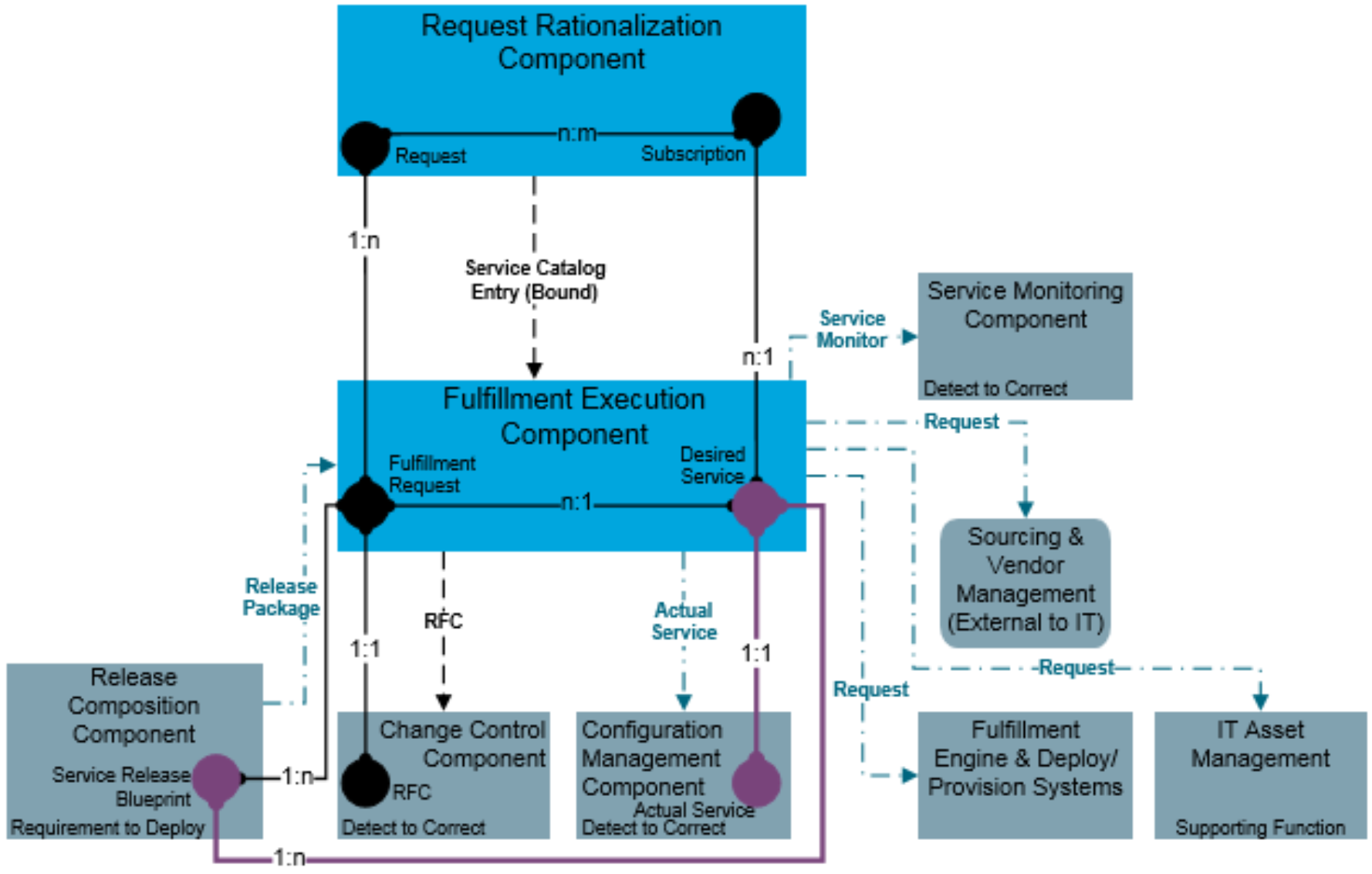
Figure 62: Fulfillment Execution Functional Component Level 2 Model
7.4.7 Usage Functional Component
Purpose
Track and manage actual usage of subscribed IT services and their associated costs.
Key Data Objects
- Usage Record (data object): A data object within the R2F Value Stream managed by the Usage functional component. It is the measured use of a particular service or service component. An example Usage Record can be composed of (internal) hours, system usage (capacity, CPUs, etc.), or external supplier usage.
Key Attributes
The Usage Record data object shall have the following key data attributes:
- Id: Unique identifier for the service Usage.
- ChargebackContractId: Relate the service Usage to the Chargeback Contract.
- UsageDateFrom: Date from which the service Usage is captured (linked to billing frequency in the Chargeback Contract).
- UsageDateTo: Date up to which the service Usage is captured (linked to billing frequency in the Chargeback Contract).
- Units: Transaction or consumption units.
- UnitType: The type of units used.
Key Data Object Relationships
The Usage Record data object shall maintain the following relationships:
- Usage Record to Chargeback Contract (n:1): Every Usage Record for a Subscription is associated with a Chargeback Contract. The Chargeback Contract defines the billing rule and frequency for a service Subscription.
Note: In-case of fixed-price billing, no Usage Record may exist for a given Chargeback Record.
Functional Criteria
The Usage functional component:
- May track actual Usage of subscribed IT services by gathering IT service Usage metrics, activity, and history for both internal and external sourced IT services associated to an aspect of the Desired Service.
Usage Records can have any unit:
— CPU usage, storage consumption, transaction numbers, …
— It can also be a cost number from Asset Management.
— It can be the price a sub-supplier is reporting. A price will be considered the cost of running that component.
- May process and break down Usage information for each Subscription, its consumers (singular, group), provider, etc.
- May collect service Usage metrics from the Service Monitoring functional component (D2C Value Stream).
- Shall encrypt sensitive Usage information or set appropriate access controls.
- Can generate service Usage history and activity reports.
- May provide Usage information to the Chargeback/Showback functional component enabling usage-based chargeback or showback.
- Shall collect cost associated with sub-services if a service is further decomposed. This will be cost reported as Chargeback Records on the sub services and will be reported as Usage back-up to the next level in the service composition.
- Shall collect Usage information from vendor invoices that represent resources used by the service.
- Shall collect cost of assets partaking in delivery of the service.
Model
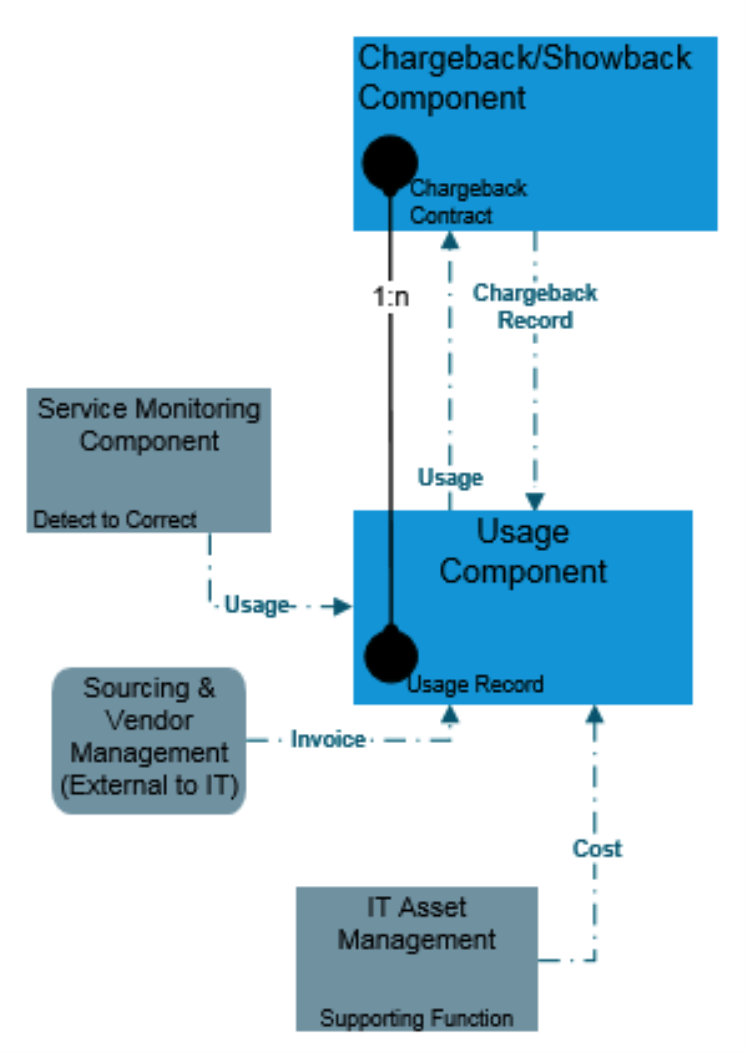
Figure 63: Usage Functional Component Level 2 Model
7.4.8 Chargeback/Showback Functional Component
Purpose
Provide chargeback or showback for internal and external services based on Subscription, Service Contract, and/or Usage information.
Key Data Objects
- Chargeback Contract (data object): Details the contract for financial obligations between the service consumer and provider(s) as defined at the time of Subscription. The Chargeback Contract typically defines the billing rule and billing frequency used to price a given service and is often tightly linked to Subscription.
- Chargeback Record (data object): Represents the actual charge to the subscriber based on the Usage of subscribed services in a given time period. It computes the charge using the billing rule, with the input being the Usage Records collected for the period.
Key Attributes
The Chargeback Contract data object shall have the following key data attributes:
- Id: Unique identifier for the Service Contract.
- SubscriptionId: Link to the Subscription for which this Service Contract is instantiated (from Subscription).
- BillingRule: Pricing rule captured at the time of Subscription describes the method/formula for translating the Usage into chargeback. This might be as simple as a product or as complex as an algorithm depending on the kind of service and granularity of chargeback/usage required to be captured.
- BillingFrequency: Billing frequency to the subscriber (e.g., daily, weekly, monthly, quarterly).
- Status: Status of the contract (active, inactive, etc.).
The Chargeback Record data object shall have the following key data attributes:
- ChargebackContractId: Unique identifier of the related Chargeback Contract.
- ChargebackDateFrom: Billing start date.
- ChargebackDateTo: Billing end date.
- SubscriptionId: Unique identifier of the related Subscription.
- BillAmount: Amount billed for the given period.
- BillStatus: Status of the record (initiated, recorded, etc.).
Key Data Object Relationships
The Chargeback Contract data object shall maintain the following relationships:
- Chargeback Contract to Subscription (n:1): This relationship provides the traceability between the service rendered (represented by the Subscription) and the expected charges for those services (described in the Chargeback Contract).
- Chargeback Contract to Chargeback Record (1:n): Multiple billing records can be generated for a single Chargeback Contract as the Chargeback Record will be generated for each billing period.
Functional Criteria
The Chargeback/Showback functional component:
- Shall calculate the chargeback/showback of consuming/subscribing to a service to the subscriber.
- Can take actual usage into consideration when calculating the charge of consuming a service.
- Shall consolidate the charges from all subscribed services once Usage is collected for the given billing period.
- May send the consolidated service charges to the Project functional component if a Project functional component exists.
- Shall send the subscribed service charges to the Service Portfolio functional component for an Actual Service if a Service Portfolio functional component exists.
- Should send a Chargeback Record for approval and internal reconciliation request to the Finance function if a Finance function (external to IT) exists.
Model
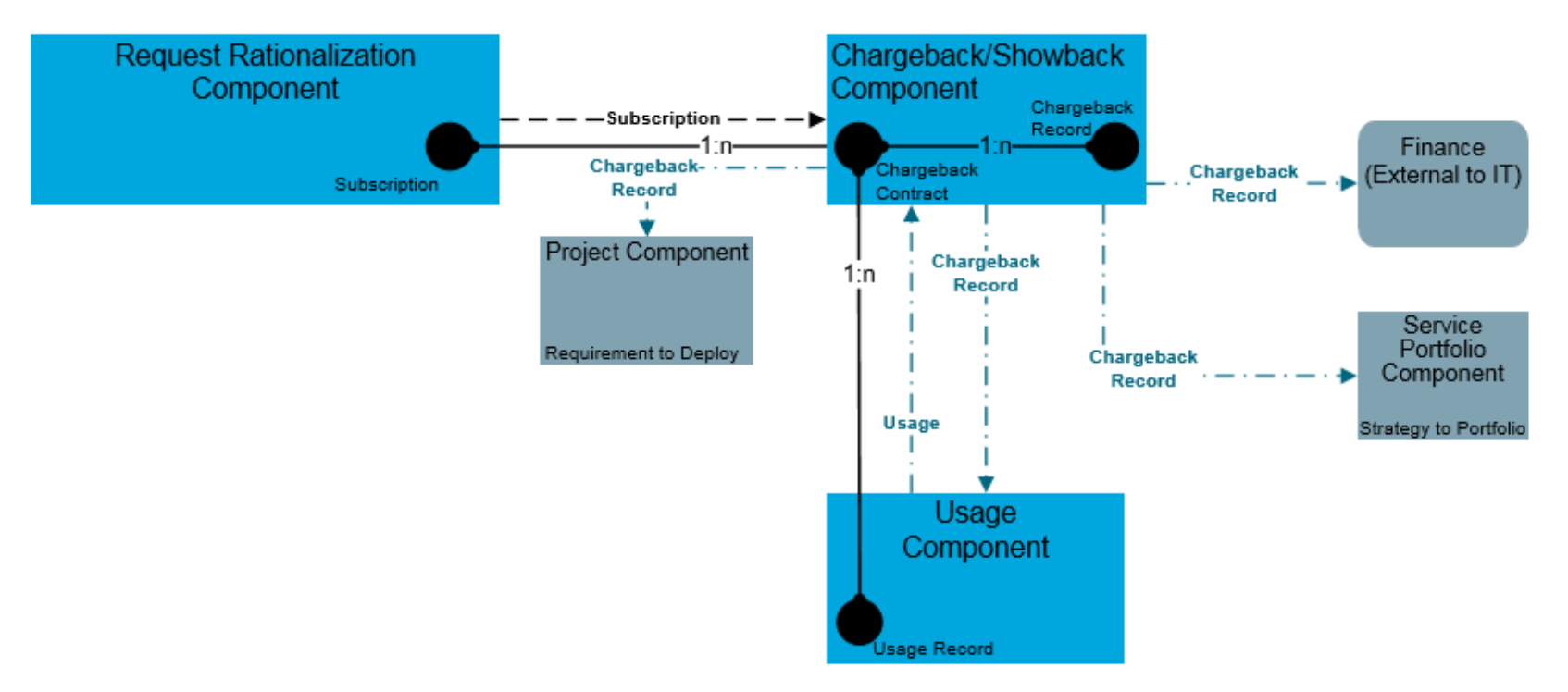
Figure 64: Chargeback/Showback Functional Component Level 2 Model
7.4.9 Knowledge & Collaboration Supporting Function
Purpose
Provide knowledge in the form of content and Conversations that help to address the needs of IT service consumers. Knowledge includes structured IT/supplier produced articles, or unstructured Conversations from business/IT users, webinars, videos, training materials, etc. which are searchable by the IT service consumers. Increase the contribution to knowledge by providing all users with the ability to generate new content, either through informal Conversations, or by more formal submissions of knowledge. Encourage contributions by promoting a collaborative culture through various techniques such as gamification. Improve accessibility of knowledge in the organization by:
- Supporting key word search capabilities
- Providing filter capabilities based on various attributes of the knowledge, such as subject category, time range, source types (internal versus external), etc.
- Supporting natural language queries to reduce the complexity of finding relevant information
- Providing users with access to third-party knowledge and forums
- Providing natural language processing analytics so (for example) “trending topics” can be reported from service desk interactions
Reduce the number of requests for information/knowledge that arrive at the IT service desk. Provide knowledge for consumption by additional value streams in general and specifically by the D2C Value Stream. IT staff participate in Conversations related to IT services that they plan, develop, or operate. IT service consumers and IT staff consume third-party knowledge through the same experience as the formal and informal forms of knowledge the company provides.
Key Data Objects
- Knowledge (data object): Structured and unstructured Knowledge from the Knowledge & Collaboration functional component.
- Conversation (data object): User Conversations from the Knowledge & Collaboration functional component.
Key Attributes
The Knowledge data object shall have the following key data attributes:
- Id: Unique identifier of the Knowledge.
- AuthorId: Unique identifier of the responsible author.
- ActualServiceId: If provided, linked to the Actual Service in Configuration Management.
- ProblemId: If applicable, a link to a related Problem will be provided.
- Status: For example, draft, revise, published, review, archived.
- PublishDate: Date/time on which the item is available for publication.
- ExpiryDate: Date/time on which the item is no longer visible.
- Title: Title of Knowledge data object.
- Body: Body text, video, or any other content that is published.
The Conversation data object shall have the following key data attributes:
- UserId: Unique identifier of the responsible author.
- KnowledgeId: Related Knowledge data object(s).
- Body: Body text, video, or any other content.
Key Data Object Relationships
The Knowledge data object shall maintain the following relationships:
- Knowledge to Problem (n:m): If a link to a Problem exists, the Knowledge data object will need changing when a Problem is (partly) resolved.
The Conversation data object shall maintain the following relationships:
- Knowledge to Conversation (n:m): Conversations can be linked to the Knowledge data object(s). A knowledge manager is typically responsible for ensuring the content creates added value.
Functional Criteria
The Knowledge & Collaboration component:
- Shall enable SMEs to submit and/or approve Knowledge data objects (whether they are IT staff or service consumers).
- Shall provide functionality to enable the IT service consumers and IT staff to rank Knowledge data objects and Conversations, thus improving future knowledge consumption.
- Shall provide functionality to enable IT service consumers to participate in Conversations relating to the IT services they consume (collaboration).
- Can aggregate multiple (internal and external) Knowledge sources.
- Shall provide Knowledge in the form of content and Conversations that help to address the needs of IT service consumers.
- May include structured IT/supplier produced articles, or unstructured Conversations from business/IT users, webinars, videos, training materials, etc. which are searchable by the IT service consumers.
- Shall increase the contribution to Knowledge by providing all users with the ability to generate new content, either through informal Conversations, or by more formal submissions of Knowledge.
- May encourage contributions by promoting a collaborative culture through various techniques such as gamification.
- May improve accessibility of Knowledge in the organization by:
— Supporting keyword search capabilities
— Providing filter capabilities based on various attributes of the Knowledge, such as subject category, time range, source types (internal versus external), etc.
— Supporting natural language queries to reduce the complexity of finding relevant information
— Providing users with access to third-party Knowledge and forums
— Providing natural language processing analytics so (for example) “trending topics” can be reported from service desk interactions
- Shall reduce the number of requests for information/Knowledge that arrive at the IT service desk through self-service.
- Shall provide Knowledge for consumption by additional value streams in general and specifically by the D2C Value Stream.
- IT staff may participate in Conversations related to IT services that they plan, develop, or operate.
- IT service consumers and IT staff may consume third-party Knowledge through the same experience as the formal and informal forms of Knowledge the company provides.
Model
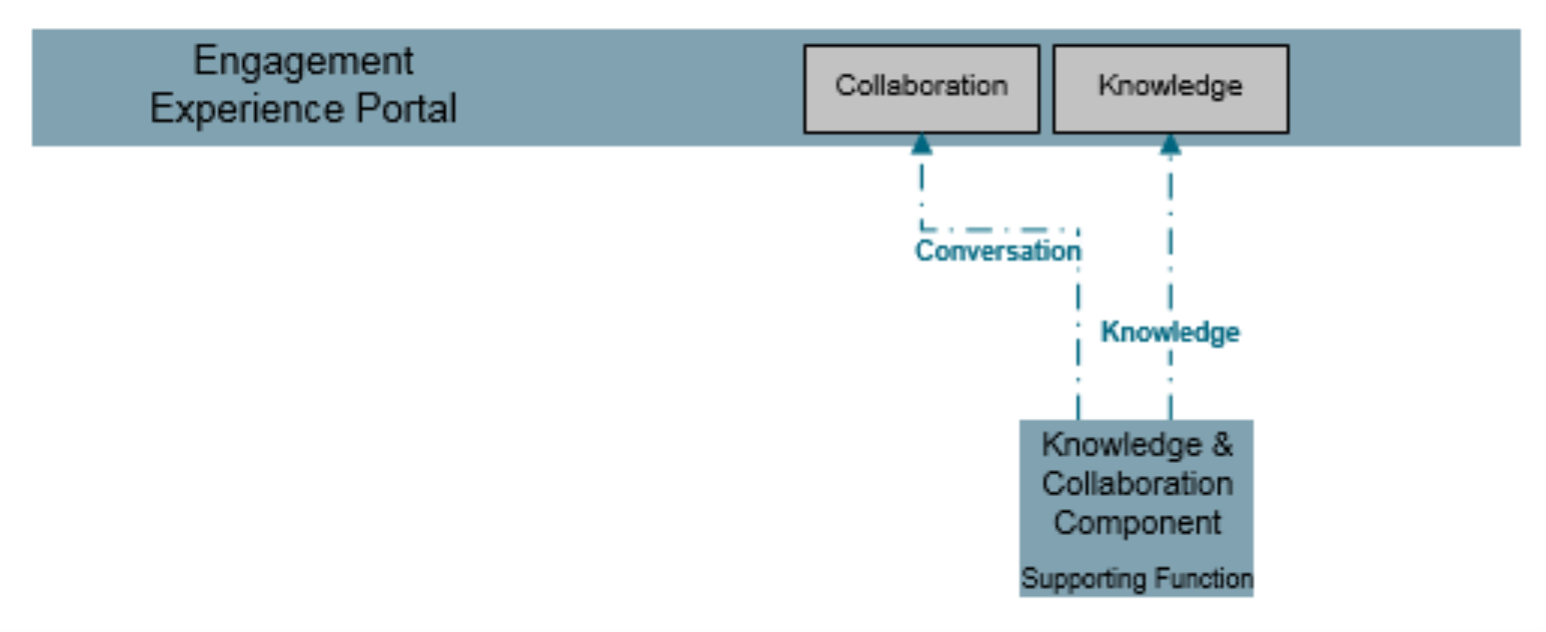
Figure 65: Knowledge & Collaboration Supporting Function Level 2 Model
 return to top of page
return to top of page